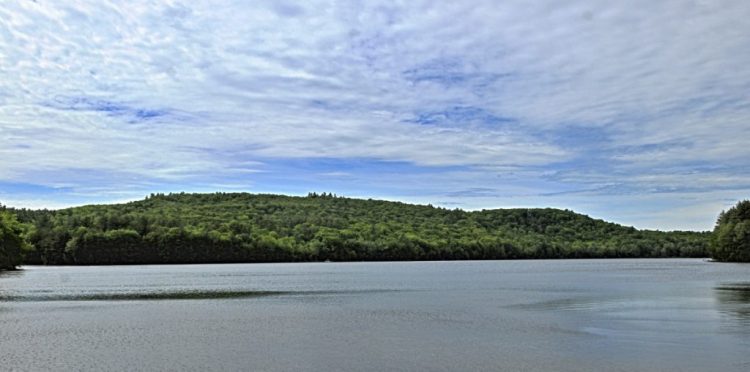In 1986, a state task force combining an unusually broad range of interests — sportsmen, conservationists, commercial fishermen, environmentalists, farmers, planners — produced a report calling for a new approach to ensure public access to Maine’s enormous undeveloped land base.
The result was the 1987 Land for Maine’s Future bond issue, an unprecedented $35 million commitment to buying new public land, purchasing conservation easements, and ensuring access to water and woods — eventually expanded to farmland, working waterfront and even deer yards.
Land for Maine’s Future has since become an established part of state government, and even eight years of resistance by former Gov. Paul LePage only slowed its momentum. During those years, it became even clearer that the program was simply the catalyst for a much broader movement uniting public, private and non-profit interests.
Now, the movement has gravitated down to the local level, confirming that protecting land on a broad scale is one of the few truly new ideas we’ve had toward not only preserving the Maine most of us love, but ensuring its economic future.
The much-discussed millenial generation is distinguished by a focus on place, individual opportunity and healthy lifestyles that seems, in many ways, perfectly matched to Maine’s strengths. Rather than seeing the outdoors as an amenity, this generation has made it central to its search for what an earlier generation called “the Good Life.”
Direct involvement by municipal governments is a key step in ensuring that this new effort has lasting duration. State programs have a broad reach, but without local commitment there isn’t as much depth and breadth.
Two recent episodes illustrate the dos and don’ts of how to handle the pressures and competing interests that any wholesale change in thinking inevitably involves.
In Brunswick, the town acquired, for non-payment of taxes, a shorefront parcel on Mere Point Road. Mere Point previously witnessed a bruising battle over a new state boat launch, which saw many residents up in arms against the plan.
The launch was built, but it offered only boating access. Despite various conservation preserves, it’s still difficult to reach the ocean for quieter pursuits in one of Maine’s largest coastal towns.
The Town Council debated, divided sharply, and then, in 2016, voted 5-4 to sell the land, without having evaluated its suitability for public use. Opponents asked for reconsideration, unsuccessfully petitioned for a town-wide vote, and finally filed suit in Superior Court.
It was all to no avail; in 2018 the court declared the lawsuit moot because the land had already been sold for $350,000, then resold for $550,000. Brunswick is still divided on the issue, and public access hasn’t improved, though efforts continue.
Compare the small Kennebec County town of Wayne. In 2016, Wayne also acquired a waterfront property for non-payment of taxes, a 118-acre woodland parcel fronting on Wilson Pond. Afterward, the selectmen held a public meeting to discuss alternative uses, including outright sale, conservation under town or non-profit ownership, or a combination of development and preservation.
The initial meeting produced no clear result, but the Conservation Commission was delegated to devise a plan, which it has, in a report called “Land for Wayne’s Future” that documents the many benefits that could come from public ownership; it recommends keeping the property.
It showed that Wayne has a much smaller proportion of publicly owned land than most neighboring towns, and — crucially — the plan has won support from most nearby landowners and businesses.
After a favorable public hearing in May, the plan will have a town vote on June 11. So far, Wayne seems to building consensus in a way that eluded the much larger coastal town to the south.
Walking the land, one finds the case compelling. Wilson Pond is in the southwest portion of Wayne, which now has few recreational opportunities. As conserved land, the parcel would bookend the Mt. Pigsah reserve across the pond in Winthrop, one of the notable town-owned recreation areas in the region.
As with many Land for Maine’s Future properties, the land could become a core for wider opportunities. Striking old cellar holes are nearby, as is a sweeping vista over the pond from a hill just beyond the current boundary. Unusual geology and excellent woodland bird habitat are among the other attractions.
The ballot question is paired with another one — a village plan that, without committing any local money, seeks a viable future for one of many small town centers that confront the serious demographic challenge of a declining and aging population.
Effectively combining conservation with economic development may not be the whole answer, but it’s surely a good place to start.
Douglas Rooks has been a Maine editor, opinion writer and author for 34 years. He is the author of “Rise, Decline and Renewal: The Democratic Party in Maine,” and welcomes comment at: drooks@tds.net
Send questions/comments to the editors.



Success. Please wait for the page to reload. If the page does not reload within 5 seconds, please refresh the page.
Enter your email and password to access comments.
Hi, to comment on stories you must . This profile is in addition to your subscription and website login.
Already have a commenting profile? .
Invalid username/password.
Please check your email to confirm and complete your registration.
Only subscribers are eligible to post comments. Please subscribe or login first for digital access. Here’s why.
Use the form below to reset your password. When you've submitted your account email, we will send an email with a reset code.